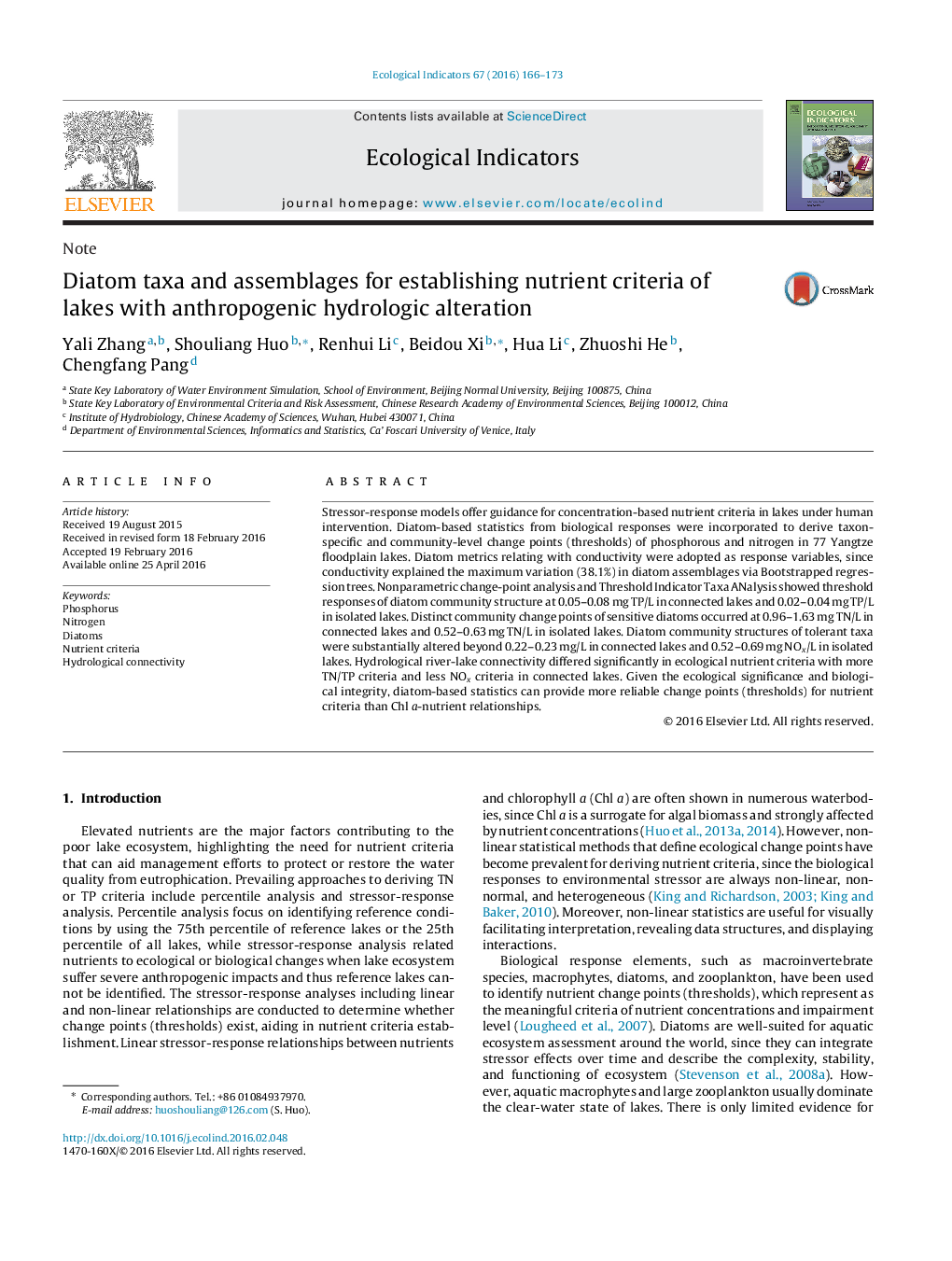| Article ID | Journal | Published Year | Pages | File Type |
|---|---|---|---|---|
| 4372864 | Ecological Indicators | 2016 | 8 Pages |
Stressor-response models offer guidance for concentration-based nutrient criteria in lakes under human intervention. Diatom-based statistics from biological responses were incorporated to derive taxon-specific and community-level change points (thresholds) of phosphorous and nitrogen in 77 Yangtze floodplain lakes. Diatom metrics relating with conductivity were adopted as response variables, since conductivity explained the maximum variation (38.1%) in diatom assemblages via Bootstrapped regression trees. Nonparametric change-point analysis and Threshold Indicator Taxa ANalysis showed threshold responses of diatom community structure at 0.05–0.08 mg TP/L in connected lakes and 0.02–0.04 mg TP/L in isolated lakes. Distinct community change points of sensitive diatoms occurred at 0.96–1.63 mg TN/L in connected lakes and 0.52–0.63 mg TN/L in isolated lakes. Diatom community structures of tolerant taxa were substantially altered beyond 0.22–0.23 mg/L in connected lakes and 0.52–0.69 mg NOx/L in isolated lakes. Hydrological river-lake connectivity differed significantly in ecological nutrient criteria with more TN/TP criteria and less NOx criteria in connected lakes. Given the ecological significance and biological integrity, diatom-based statistics can provide more reliable change points (thresholds) for nutrient criteria than Chl a-nutrient relationships.
